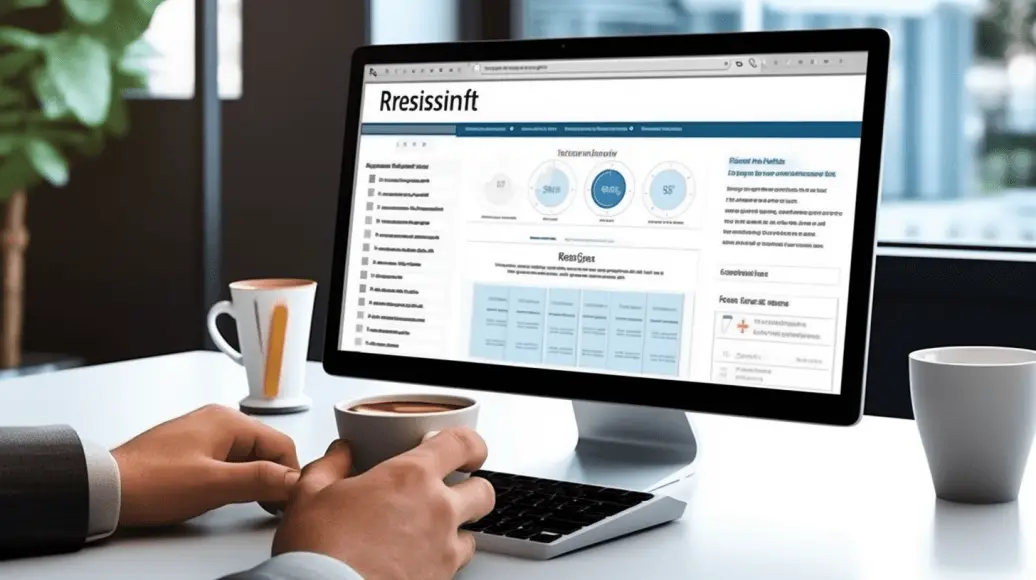Identity theft, an increasingly prevalent issue, poses significant threats to individuals’ financial and personal security.
The crime involves misappropriating personal data with the intention to commit fraud. Various forms of identity theft exist, each with distinct risk factors necessitating a comprehensive understanding for effective prevention.
Amid this context, this article explores the concept of an ‘Identity Theft Risk Assessment Template’; a tool designed to facilitate systematic identification, evaluation, and mitigation of risks associated with identity theft.
This tool is especially pertinent considering the stringency of regulatory requirements for protecting customer data.
The ensuing discourse aims to provide a detailed overview of the subject, enhancing readers’ knowledge and preparedness against this ubiquitous cybercrime.
Through this academic exploration, readers can acquire a nuanced understanding of identity theft, its various types, risk factors, and the role of a risk assessment template in minimizing potential threats.

Definition of Identity Theft
Identity theft is a pervasive and escalating concern. It necessitates the utilization of a risk assessment template for comprehensive analysis and proactive measures.
The template serves as a pivotal tool providing an overview of potential vulnerabilities. It enables individuals or organizations to identify, control, and mitigate potential threats effectively.
The rising prevalence of identity theft underscores the importance of this robust tool. It illuminates the need for a thorough and systematic approach to risk management, thus resonating with the key tenets of cybersecurity.
Overview of Risk Assessment Template
An effective risk assessment template is a comprehensive tool to systematically identify, evaluate, and prioritize potential threats related to identity theft.
Inculcating a robust identity theft prevention program, this template aids businesses in understanding the risk of identity theft and formulating reasonable policies.
Address requests from clients, whether it pertains to the national bank or a community bank, require due diligence for both business purposes and identity theft deterrence.
It is essential to consider the recommendations for material changes suggested by senior management to strengthen the process.
Verifying evidence of identity when contacting a consumer in question, particularly in cases of potential Synthetic Identity theft, is a crucial aspect of bank regulatory practices.
Federal bank and mutual savings bank policy template products should also consider these precautions, ensuring the secure branding of bank documents.
As businesses evolve, they must tackle more sophisticated identity threats, such as E-mail Address Password fraud, another factor that raises flags for businesses. This reinforces the need for detailed departmental procedures and E-Mail Related Fraud Procedures.
An essential aspect of business continuity is to ensure that business decisions and business processes adequately address compliance issues.
For example, staff, especially departmental employees and relevant staff should be trained in handling address change requests, addressing restrictions, and identifying inconsistencies in spending patterns that may signal fraud.
Companies in connection with the banking sector should also focus on maintaining a robust Customer Identification Program and Customer Information Security Program.
These programs aid in addressing compliance and ensuring that the dedicated staff effectively manages the reports in connection with requests for address changes.
Additionally, managing arrangements with service providers requires rigorous oversight. This becomes particularly important when handling financial aspects such as the payment of debt, initial payment schedules, and deferred payments.
A pattern inconsistent with a customer’s usual transaction habits may signal a need for a stepped-up response.
Audits conducted by banking institutions or external audit examiners, including government examiners, offer another layer of protection. These audits scrutinize one-time transaction accounts and regular accounts of both client companies and individuals.
When encapsulated in an effective risk assessment template, all these measures assist in systematically identifying, evaluating, and prioritizing potential threats related to identity theft.
This fosters an environment that bolsters security, ensuring business continuity and contributing to the overall health of the business landscape.
Identity theft prevention encompasses the following:
- Development of identity theft policies to deter and detect threats.
- Incorporation of a risk assessment mechanism to evaluate the probability and impact of identity theft.
- Ensuring identity theft compliance through:
- Regular identity theft compliance audits to ascertain adherence to regulations.
- Implementation of a comprehensive identity theft program that flags identity theft prevention measures.
This template, therefore, is instrumental in mitigating the risks and consequences associated with identity theft.
Types of Identity Theft
Identity theft, a burgeoning issue in the digital age, manifests in various forms, each characterized by unique complexities and consequences.
Financial Identity Theft involves unauthorized access to an individual’s financial information for fraudulent purposes.
Criminal Identity Theft refers to the misuse of another person’s identification in criminal activities to evade arrest or prosecution.
Equally significant is Tax-Related Identity Theft, where an impostor files a fraudulent tax return using another person’s social security number.
Medical Identity Theft entails the unauthorized use of another person’s personal information to obtain medical services or products.
Financial Identity Theft
Financial identity theft poses a significant threat, with potentially devastating consequences such as credit damage and fraudulent debt.
It is defined as the unauthorized use of an individual’s identity, often involving the misuse of personal financial information.
Identity thieves may manipulate bank policies, use suspicious documents for identity verification, or exploit loopholes in identity theft prevention compliance.
This can result in fraudulent activities often unnoticed by financial institutions until evidence of identity theft emerges.
The table below outlines some common experiences with identity theft:
| Experiences with Identity Theft | Preventive Measures |
|---|---|
| Fraudulent account openings | Regularly check credit reports from consumer reporting agencies |
| Unauthorized transactions | Strengthen identity verification processes |
| Misuse of personal information | Improve bank policies |
| Credit damage | Enhance identity theft prevention compliance |
These measures can significantly reduce the likelihood of financial identity theft and its associated implications.
Criminal Identity Theft
Criminal identity theft, a perilous form of identity fraud, involves the deceptive use of someone else’s identifying information to commit crimes, leading to wrongful arrests and criminal records for innocent victims.
Evidence of identity theft is often discovered through hints of identity theft in financial statements or criminal records.
The consequences of identity theft can be severe for victims, impacting their financial status and personal reputation.
Consequently, identity theft compliance audit procedures are crucial in detecting incidents of identity theft and ensuring customer identification programs and customer information security.
These procedures play a significant role in identity theft prevention, safeguarding individuals from becoming a victim of identity theft and mitigating the damaging effects of this rampant criminal activity.
Tax-Related Identity Theft
After examining Criminal Identity Theft, proceeding to the analysis of Tax-Related Identity Theft is crucial.
This form of identity theft occurs when perpetrators use a taxpayer’s identification information without consent to file fraudulent tax returns to obtain unmerited refunds.
Evidence of identity theft in this context typically includes:
- Unfamiliar transactions or deductions on submitted returns.
- Notifications from the tax agency about multiple tax returns associated with the same taxpayer identification.
- Receiving tax transcripts that the taxpayer did not request.
These flags of identity theft necessitate the immediate implementation of government identity theft prevention protocols.
Reasonable procedures, such as verification procedures, can be adopted from a sample identity theft risk assessment template to minimize identity theft.

Medical Identity Theft
Delving into healthcare, medical identity fraud is a complex issue involving misusing another person’s health insurance information to receive medical services, pharmaceuticals, or even surgery.
This form of identity theft often leaves victims with incorrect entries on their medical records, which can greatly impact future healthcare services.
| Biometric Identification | Electronic Identification | Discrepancy Procedures |
|---|---|---|
| Current government-issued identification card | Program for identity verification | Evidence of identity theft |
| Theft compliance audit procedures | Detailed guidance for victims | Measures to secure personal health information |
The consequence of medical identity theft extends beyond financial burden, posing significant risks to the victim’s health and medical history.
Therefore, stringent identity verification methods, such as biometric and electronic identification programs, and robust theft compliance audit procedures are necessary to mitigate this risk.
Risk Factors Associated with Identity Theft
Identity theft, an escalating global concern, is primarily facilitated by several risk factors that individuals may unknowingly expose themselves to.
Weak or stolen passwords, PINs, or answers to security questions can account for the vulnerability of personal information.
Another risk factor is the use of unsecured Wi-Fi networks and connections.
Falling victim to social engineering or phishing scams is also a significant risk factor associated with identity theft.
Additionally, the misplacement or theft of physical devices such as wallets, phones, or laptops can expose individuals to identity theft.
A comprehensive understanding of these risk factors is crucial in mitigating the potential threats and devising effective prevention strategies against identity theft.
Weak or Stolen Passwords/PINs/ Answers to Security Questions
Compromised or easily decipherable passwords, PINs, and security question answers pose a significant threat to personal data security, leaving one vulnerable to the insidious crimes of identity theft.
Email-related fraud procedures, often associated with this vulnerability, necessitate implementing business continuity planning and employee alert systems.
The role of the board of directors and management is crucial in setting robust bank policy standards to mitigate such risks.
Senior employees should also be involved in creating a custom employee training course that equips staff with the necessary skills to identify and handle potential threats.
Bank compliance services can offer further support in this regard, providing guidance on authentication methods that protect against password breaches, thus strengthening the overall framework for personal data security.
Unsecured Wi-Fi Networks and Connections
Unprotected Wi-Fi networks and connections constitute a potent avenue for data breaches, posing a formidable challenge to personal data security. The reliance on these networks has increased the foreseeable risk of identity theft.
The activity in connection with unsecured Wi-Fi networks:
- Using such networks for transactions involving consumer accounts without adequate security measures can provide easy access to hackers, resulting in data leaks and unauthorized access.
Consumer response to the threat:
- Consumers must maintain vigilance when using public Wi-Fi networks, safeguarding their connections and regularly checking their consumer reports for any discrepancies that may indicate evidence of identity theft.
In cases where there’s a reasonable belief of a security compromise, quick action must be taken to mitigate the damage and prevent further data breaches.
Social Engineering/Phishing Scams
Social engineering and phishing scams represent another prevalent challenge in personal data security. Cybercriminals employ manipulative tactics to trick individuals into divulging sensitive information.
Evidence of identity theft often emerges in suspicious patterns, such as uncharacteristic consumer credit report requests or discrepancies from consumer reporting.
Individuals with prior experience with identity theft may spot these anomalies more readily. These scams prey on the consumer relationship, manipulating trust to access business accounts and other sensitive data.
Cybercriminals often pose as legitimate entities, employing sophisticated social engineering/phishing scams that mimic business practices.
To mitigate this risk, users of consumer reports should exercise caution. They should verify the authenticity of any requests for personal data and monitor for unusual activity.
Misplaced or Stolen Physical Devices (e.g. Wallet, Phone, Laptop)
In the digital age, the loss or theft of physical devices such as wallets, phones, or laptops can lead to serious breaches in personal data security. A misplaced or stolen device often contains sensitive information, making it a potential tool for identity theft.
This is where an identity theft risk assessment template becomes crucial for both the consumer and the company. Through it, potential vulnerabilities can be identified, mitigating the chances of such incidents occurring.
The template evaluates the security measures for physical devices, including wallets, phones, and laptops. It also helps track previous experiences and transactions that may serve as evidence of identity theft.
Therefore, properly managing physical devices is essential in reducing identity theft risk.
Regulatory Requirements for Risk Assessment Template
The Federal Trade Commission (FTC) guidelines and the Gramm-Leach Bliley Act (GLBA) requirements delineate critical regulatory stipulations for creating a risk assessment template.
These mandates, crafted to ensure robust protection against identity theft, demand meticulous attention from businesses in their risk management strategies.
A comprehensive understanding of these regulations, their implications, and the necessary practices for compliance are paramount in crafting a practical and legally sound risk assessment template.
Federal Trade Commission (FTC) Guidelines
Federal Trade Commission (FTC) guidelines provide comprehensive directives on identity theft risk assessment, thereby establishing a robust framework for safeguarding sensitive personal information.
The guidelines highlight the importance of a well-structured identity theft risk assessment template to ensure systematic analysis and mitigation of risks.
FTC guidelines emphasize ‘flags rule examination procedures’ to identify patterns inconsistent with the customer’s typical behavior, offering a proactive approach to detect evidence of identity theft.
The guidelines mandate ‘address discrepancy compliance’ by requiring businesses to send notices of address discrepancies to customers, ensuring immediate flag identification.
FTC encourages businesses to consider a ‘freeze in response’ strategy after detecting suspicious activities.
The guidelines stress the importance of maintaining extensive records to prove compliance.
FTC recommends regular reviews and updates to the identity theft risk assessment template, ensuring it remains fit for purpose and effective against evolving threats.
Gramm-Leach Bliley Act (GLBA) Requirements
Building on the Federal Trade Commission (FTC) guidelines, the Gramm-Leach Bliley Act (GLBA) introduces essential requirements for financial institutions in managing identity theft risks.
The GLBA mandates institutions to establish and implement procedures for identifying and responding to risks in their covered accounts.
The act stipulates that the board of directors or an appropriate committee of the board must oversee theft in connection with these accounts.
This includes addressing any notice of address discrepancy, evaluating evidence of identity theft, and taking corrective actions.
The GLBA also requires institutions to design an identification program, approved by the board of directors, to verify the identity of persons opening accounts.
Compliance with these provisions is monitored by appropriate regulatory bodies to ensure optimum protection against identity theft.
Frequently Asked Questions
What are some practical steps to reduce the risk of identity theft?
Practical steps to mitigate identity theft risk include maintaining robust password practices, securing personal information offline and online, scrutinizing communication channels for phishing attempts, and regularly monitoring credit reports for any discrepancies.
How can businesses train their employees about the risk of identity theft?
Businesses can train employees on identity theft risks through workshops, webinars, and e-learning modules.
These should cover cyber-security best practices, fraud detection techniques, and protocols for reporting suspected incidents.
Can insurance cover losses from identity theft?
Yes, various insurance providers offer identity theft coverage. Such policies often cover expenses incurred during identity restoration, including legal fees, lost wages, and sometimes even direct financial losses resulting from the theft.
How often should an identity theft risk assessment be carried out?
An identity theft risk assessment should be performed annually. However, it is advisable to increase the frequency if changes occur in personal circumstances or technological advancements increase the potential for identity theft.
Are there any specific software or tools that can help assess identity theft risk?
Numerous software and tools exist to aid identity theft risk assessment. These include cybersecurity solutions like Norton, McAfee, and Identity Guard, which offer features for threat detection, protection, and response to potential security breaches.

Conclusion
In conclusion, the significance of an identity theft risk assessment template remains undebatable in today’s digital age. It serves as a vital tool to:
- Identify potential threats.
- Protect sensitive information.
- Comply with regulatory requirements.
Organizations can enhance security measures by understanding the types of identity theft and associated risk factors.
The knowledge thus gained can lead to developing a robust strategy to mitigate the ramifications of identity theft, ensuring data integrity and safeguarding stakeholders’ trust.

Chris Ekai is a Risk Management expert with over 10 years of experience in the field. He has a Master’s(MSc) degree in Risk Management from University of Portsmouth and is a CPA and Finance professional. He currently works as a Content Manager at Risk Publishing, writing about Enterprise Risk Management, Business Continuity Management and Project Management.

